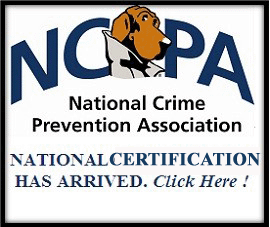Intellectual Property Theft: Get Real
The Campaign To Prevent Intellectual Property Theft
Intellectual property theft is often distinguished by its low cost and the ease with which it can be committed, but that doesn't mean it's right.
If you think intellectual property theft is a victimless crime, think again. It costs the U.S. economy tens of billions of dollars each year, deprives people of their livelihoods, encourages criminal activities by gangs and organized crime groups, and sometimes results in serious illness or injury.
Intellectual property theft takes many forms. Sometimes it even seems harmless. It’s easy to download a tune without paying for it—or thinking about the sound technician who is going to lose a job because so many others are doing the same thing and reducing profits. And, likewise, knockoff goods sold by some street vendors can be excellent buys; who doesn’t like picking up a bargain now and then? Sometimes, intellectual property theft is much more dangerous, as when counterfeit pharmaceutical drugs—which may be inexpensive or easy to obtain online or by mail—make the purchasers sick because of harmful or missing ingredients. And the tax revenue lost when the sale of illegal goods is not reported is enormous. That’s an especially serious concern during a time of tight budgets.
Intellectual property theft is often distinguished by its low cost and the ease with which it can be committed. But that doesn't mean it's right. Recent advances in technology and manufacturing have contributed to its prevalence. But it has the potential to affect each and every one of us, particularly when it results in street crime, the deterioration of our communities, and the spread of organized crime. The profit from the sale of cheaply made counterfeit goods, including pharmaceuticals, sold online or by street vendors and discount stores may go to a gang or crime organization that provided the seller with the goods. And the criminals can—and do--use that profit to finance their other activities, including the drug traffic.
Because intellectual property theft is so harmful, the National Crime Prevention Council, in partnership with the Bureau of Justice Assistance, Office of Justice Programs, U.S. Department of Justice, has launched a campaign to show how harmful it is—to all of us--and to help prevent it. Research shows that when people know the costs—and the dangers—of intellectual property theft, they take it much more seriously.
This campaign includes print and online posters and fliers, an online video, radio spots, and other materials focused on counterfeit pharmaceuticals, pirated materials, fake consumer goods, and gangs and organized crime. This website includes sections on all of these topics, discusses the latest research and trends, and provides resources that can be used on websites, in publications, and over the broadcast and cable media. These resources can also be used in schools and before community groups to teach people about the dangers and the costs of intellectual property theft and how they can help prevent it.
"This Project is supported by Grant No.2010-DB-BX-K023 awarded by Bureau of Justice Assistance. The Bureau of Justice Assistance is a component of the Office of Justice Programs, which also includes the Bureau of justice statistics, the National Institute of Justice, the Office of Juvenile Justice and Delinquency Prevention, the SMART Office, and the Office of Victims of Crime. Point of view or opinions in this document are those of the author and do not represent the official position or policies of United States Department of Justice."








